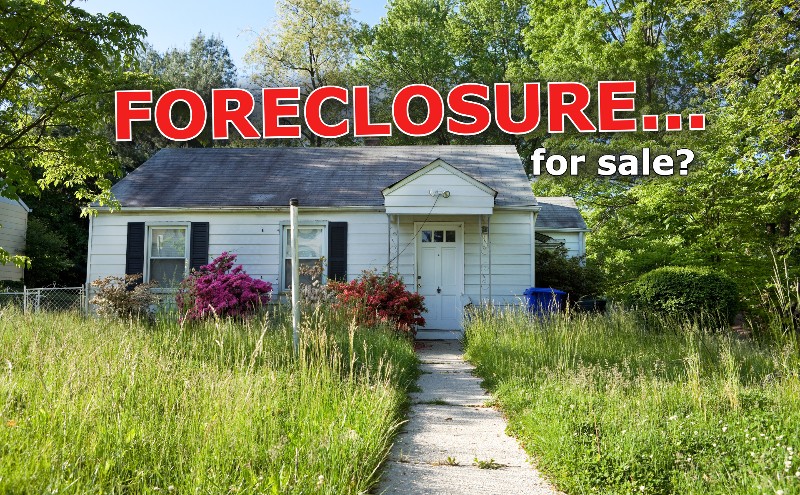We often talk about the struggles for homebuyers in this housing market, as well as the advantages it offers to sellers. However, what’s often missing from the discussion is the reality that many face: they’re both homebuyers and homesellers, and the two transactions are inextricably linked. Around 70% of home buyers are also home sellers.
That presents a conundrum. How do you handle buying a house while selling a house at the same time? There are a few different ways of approaching this - and each way has both pros and cons.
Here’s what you need to know.
Two Mortgages (Buy first, then sell)
- Pro: More flexibility on timing, moving
- Con: You need enough income/funds to qualify for your existing mortgage and a new mortgage. If your home doesn't sell as fast as you want, you could be stuck paying for two mortgages at once
There are several advantages to buying a home before you sell. In a seller’s market with low inventory, it makes sense to find your next home first - because buying will be the more challenging part. It may take several months to both find a home that suits your needs, and have your offer accepted.
Buying your home first also makes moving easier - you definitely have a home to move into, and are less likely to have to rent in the interim (or move all your belongings twice!). To pay for your new home's closing costs, you can borrow against your existing home using a HELOC (home equity line of credit).
Most buyers won't qualify for a mortgage before selling their house, though (you'll need enough income/funds for both) which is why it’s less typical for people to go this route.
Bridge Loan (buy first, then sell)
- Pro: Can place a contingency-free offer
- Con: Can be less cost-effective than other options; still requires
A bridge loan is a loan that covers the gap between buying and selling a home. The loan is secured by your existing home and it provides the funds (up to 80% of your existing home equity) you’d need to cover the closing costs and other fees. Then, once your original home is sold, you can use the proceeds to repay the bridge loan.
Because bridge loans - which are typically 6 or 12-month short-term loans - are meant to be short-term solutions, they come with higher rates. According to Forbes, bridge loan interest rates typically range from 8.5% to 10.5%. You'll also have to pay closing fees on the loan (loan origination fees, appraisal fees, etc) which can total 1.5-3% of the total loan amount.
Ultimately you end up paying more money for the convenience and reduced stress. Once you close on your new home, you’ll effectively have two major loans (both the bridge loan and your new mortgage) to pay off.
Both Settlements on the Same Day (sell first, then buy)
- Pro: Cost-effective
- Con: Very sensitive to timing - If one settlement is delayed, things can snowball. Stressful
A simultaneous settlement is essentially the ideal solution to buying and selling a home on the same day. It means that everything lines up perfectly and you’re able to use the proceeds of the first home for the second home, while avoiding the need for temporary housing, storage, having two mortgages at once, et cetera.
The trouble with a simultaneous settlement is just that - it’s essentially an ideal scenario that requires two complicated and independent transactions to occur seamlessly and without delay. Realistically, though, delays are so common in home closings that they border on routine - and often it’s due to circumstances completely out of the home buyer/homeseller’s/agents' control, like a lender asking for additional documentation or title-related problems.
"In this situation, there are a million little things that can just be minor delays and if you're counting on settlement happening, not just in that day but on that morning, that can really, really derail things," warns Philadelphia-based buyer-agent Scott Hicks. "So now if the sale of your house has to be delayed 24 hours, you need to delay the house you're buying by 24 hours, because you need that money to buy. There are ways to resolve these issues but it adds a lot of stress to the situation."
Lease Back (sell first, then buy)
- Pro: More flexible on timing
- Con: Any wear and tear or damage on the new house after settlement can result in conflict - or even litigation (liability); no guarantee of finding your next home
As a buyer, you’ll struggle to get any contingencies in this market, but as a seller, there’s never been a better time. A seller rentback contingency allows you to stay in your home, essentially "renting" it back from the buyer, for a short period - typically for 30-60 days after it’s been sold. Many buyers are happy to agree to this if it means they can stop the endless cycle of touring homes and getting outbid.
The benefits of the seller rentback are obvious; the problems have to do with lining up your next settlement, and keeping the home in prime condition so you don't lose your deposit. Taking 90 days to move into a new home isn't unusual these days. It will take you weeks to find a home, and in this market, it may take weeks before an offer is accepted. If you're buying your home with a loan, it can take up to 50 days to completely close the loan and get your keys.
The buyer leasing you back your home, though, likely has their own deadlines to deal with - so you're opening yourself to the possibility of having nowhere to live in the interim.
So: How Can You Prepare to Buy and Sell Your Home at the Same Time?
It sounds like the punchline of a bad joke: what’s more stressful than buying a home? ...That would be buying one home and selling another at the same time. However, there are steps you can take to reduce the stress and confusion of these complex transitions.
“I advise anyone looking to buy and sell at the same time to talk to a Realtor and get a sense of what they want, the steps involved, and then work out what they're looking for - because sometimes it can take viewing homes for a couple of weeks, or even months, to refine what you're looking for,” Hicks says, explaining that a buyer’s perception of what they want - or which features they want to prioritize - often changes as they go through the process.
“Sometimes people will look at a few homes and say ‘actually we’d rather have this feature, that’s important to us.’ and if you wait to figure that out 2-3 weeks into the process when you have a deadline, that can be more difficult. When you're in this high-pressure situation with deadlines, it’s even more important to iron that out."
- Have two separate agents (one to handle selling, one to handle buying). Why? It’s a lot easier for the agent to confuse details when they’re working with you on two separate transactions. Your needs for each transaction will also be distinct, so it’s better to have one person who is 100% focused on your needs as a buyer, or your needs as a seller.
- Work with one brokerage so that you're less likely to have communication mishaps between your two agents.
"Get all your ducks in a row."
- Ask your brokerage whether they offer incentives to buy and sell your house with them. Buyers who work with Houwzer, for example, get $2,500 back at closing if they bundle mortgage and title with them - and that’s money they can use toward closing costs, renovation, or simply taking a well-earned vacation.
“Get all your ducks in a row, get your team put together - your Realtor, your mortgage company, your title company. Having all that figured out ahead of time will make buying and selling at the same time easier to navigate,” recommends Hicks.
Related Reading



